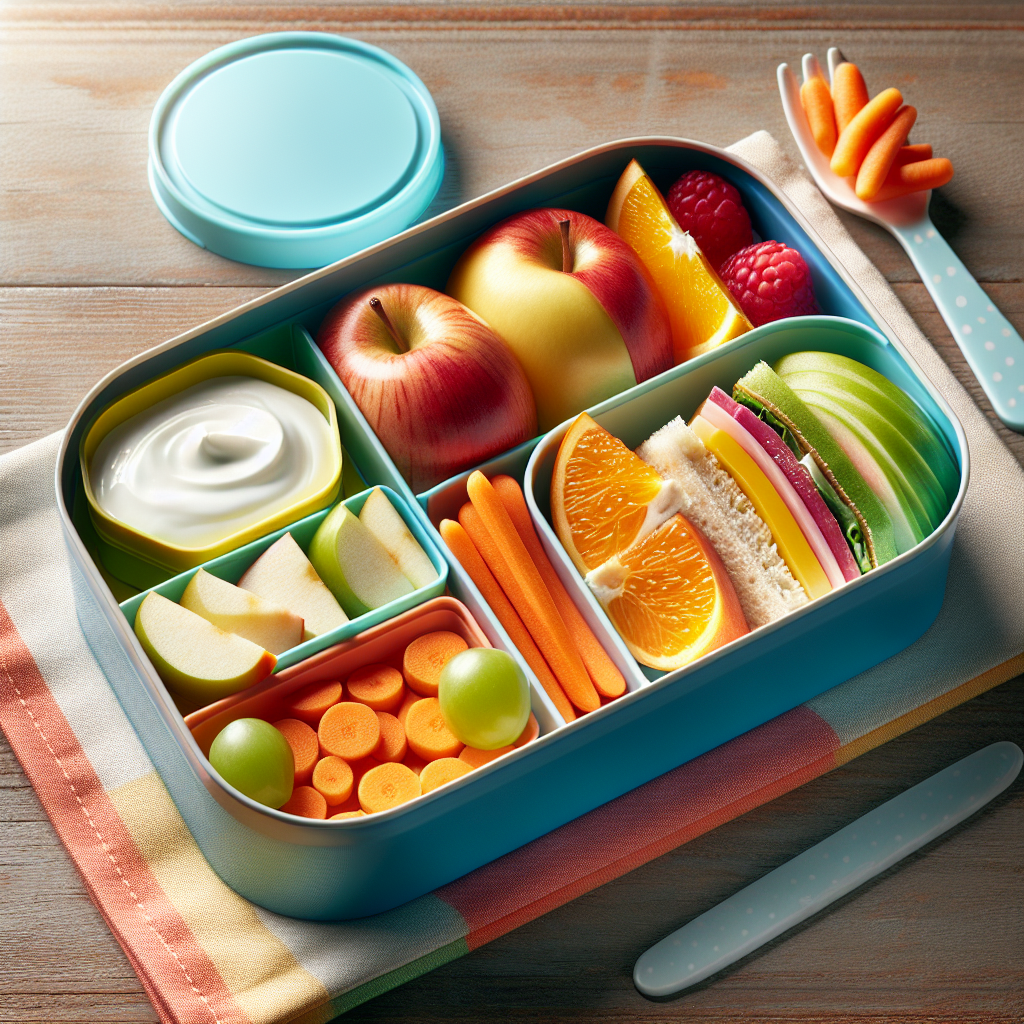Packing a balanced meal for kids can be a daunting task, especially if you’re aiming for a mix of nutrition and palatability. With picky eaters, busy schedules, and a myriad of dietary preferences, it’s essential to strike a balance between health and taste. Here’s how to create a meal that your kids will not only tolerate but enjoy.
1. Understand Nutritional Needs
Before diving into packing, it’s crucial to understand what constitutes a balanced meal. A well-rounded meal for children should include:
- Protein: Key for growth and development. Consider options like chicken, turkey, beans, or hard-boiled eggs.
- Whole Grains: Provide energy and fiber. Brown rice, quinoa, whole-grain bread, or whole-wheat pasta are excellent choices.
- Fruits and Vegetables: Essential for vitamins and minerals. Aim for color variety—think bell peppers, carrots, apple slices, or berries.
- Dairy or Dairy Alternatives: Important for calcium and vitamin D. Include yogurt, cheese, or fortified plant-based options.
2. Involve Your Kids
Engaging your children in the meal-planning process can lead to greater acceptance of what they are eating. Let them pick some fruits and veggies at the grocery store, or involve them in the preparing stage. When kids feel they have a say in what they eat, they are more likely to enjoy it.
3. Create Fun and Enticing Designs
Presentation matters! Here are some creative ideas for packing meals:
- Use Bento Boxes: Bento boxes allow for variety and present food in a visually appealing way. Use different compartments to separate foods and create a rainbow of colors.
- Noticeable Themes: Create meals based on themes, like "Taco Tuesday" or "Colorful Rainbow Lunch," that can intrigue kids.
- Cut Foods Creatively: Use cookie cutters to shape sandwiches or fruits into fun designs. Stars, hearts, and animals are often a hit!
4. Choose Kid-Friendly Foods
Opt for foods that are known to be popular with children, and then enhance them for nutritional value:
- Wraps and Roll-Ups: Use whole-grain tortillas and fill them with turkey, cheese, and lettuce for a protein-packed meal. Kids enjoy them because they’re easy to hold and eat.
- Dippables: Provide a fun, interactive element with dippable foods like carrot sticks with hummus, apple slices with peanut butter, or whole-grain crackers with yogurt dip.
- Mini Meals: Mini versions of meals—like meatballs, mini pizzas, or sliders—can be more appealing and fun.
5. Make it Easy to Eat
Kids often struggle with meals that are difficult to consume. Here are some quick considerations:
- Finger Foods: Foods that can be eaten without utensils, such as cut-up veggies, fruits, cheese sticks, and sliced meats, are easier for kids to handle.
- Pack Individual Portions: Portion out snacks and sides in small containers to make it easy for kids to grab and go.
6. Add Treats Mindfully
Incorporate a small, healthy treat to make the meal enjoyable. This could be:
- Homemade Trail Mix: A mix of nuts (if no allergies), dried fruits, and a few dark chocolate chips can be a satisfying treat.
- Frozen Yogurt Bites: Freeze yogurt in bite-sized pieces, which can be a refreshing addition to lunch.
- Fruit Skewers: Thread pieces of fruit onto skewers for an appealing and fun snack.
7. Keep It Simple and Balanced
Don’t overcomplicate meals. Focus on keeping each component simple yet nutritious. A meal that features a protein source, a grain, and a couple of colorful veggies or fruits is often enough. Kids appreciate simplicity.
8. Create a Rotation
To avoid lunch fatigue, create a rotation of meals, mixing and matching various components. This keeps things fresh and exciting without overwhelming you with meal prep.
Conclusion
Packing a balanced meal for kids doesn’t have to be a chore. By understanding their nutritional needs, involving them in the process, and creating meals that are visually appealing and easy to eat, you can encourage healthy eating habits that last a lifetime. Remember, it’s a journey—keep experimenting and have fun along the way!

